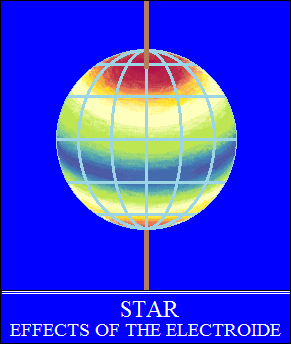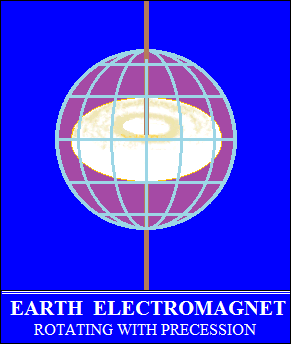Cosmic
oscillations
The stars magnetism
The research of stellar magnetism is impossible based on the concept of
electric current:
Displacement, transport of "electric atoms" - False!
Magnetism is the effect of electricity. Electricity is the effect of magnetism.
Why this interdependence?
Because orthogonality is a property of the vectors.
The vectors in closed circuits are surrounded by orthogonal vectors
in closed circuits - electricity and magnetism.
Electricity is the simple orientation of the polarity of vectors (of the
atoms).
Polarity orientation is an angular movement.
The angular motion is the action of electromagnetic force (propagation)
and the resistance that opposes - electrical intensity and electrical
resistance.
Magnetism of stars is produced by such an orientation of the polarities
of atoms in the electroid.
Electroide polarization is conserved by its own magnetism,
producing angular propagation and acceleration.
The arguments of the existence of the electroid, of the stellar electromagnet
are its own effects.
The distribution of electromagnetic oscillations at the surface of the
star,
emitted by the electroid activity, is eloquent for its localization.
The electromagnet forces, gyroscopically, accelerate planets and stars.
Forces are the source of the acceleration, they are independent of the
gyroscopic impulse stellar.
The autonomy of the magnetic axis, the migration of the poles, decrease
the speed
of rotation of the star and give to the gyroscopic axis a more or less
millennial precession.
This interpretation is evident in the solar system.
Here, the directions of the magnetic and gyroscopic axes of the planets
are circumstantial developments.
In the millennial evolution of a planet, there could be periods when the
sun showed the same face,
as the moon now shows the earth. Rotational speed, orientation of magnetic


